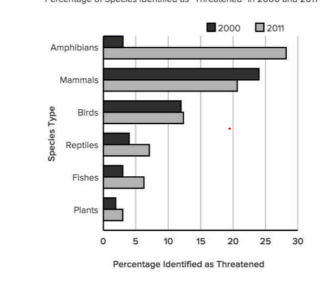Hi SAT Aspirants, welcome to AKVTutorials. As you know SAT (Scholastic Assessment Test) is a standard test, used for taking admission to undergraduate programs of universities or colleges of United States. SAT is developed and published by the College Board, an organization in United States, administered by the Educational Testing Service. Therefore, you need to do practice on SAT Reading Section, SAT Writing and Language Section. In this article, you will get SAT Reading and Writing Prep Test 56 with Answer Keys AMBIPi
Instruction:
- In the passage below is accompanied by a number of questions.
- For some questions, you need to think how the passage might be revised to improve the expression of ideas.
- For other questions, you will consider how the passage might be edited to correct errors in sentence structure, usage, or punctuation.
- Some questions will direct you to an underlined portion of a passage.
- Other questions will direct you to a location in a passage or ask you to think about the passage as a whole.
SAT Writing & Language Section Passage
SAT Reading and Writing Prep Test Passage Title: The Boreal Chorus Frog: An Exceptional Amphibian?
Over the past decade, a remarkable number of amphibians have come under the threat of extinction. A study conducted by the International Union for Conservation of Nature showed that 1 in 2011 the percentage of amphibian species identified as threatened was greater than the percentage of all other species combined. If this trend continues, it would mark the largest extinction event since the Pleistocene Era extinctions 10,000 years ago. Several factors contribute to the alarming decline in amphibian 2 species; the destruction of habitat, introduction of invasive species, 3 contaminating the environment, and rise of infectious diseases.
One amphibian species, though, remains curiously robust. Named for its distinctive breeding call, 4 other species have been negatively impacted by factors that do not seem to affect the boreal chorus frog For example, one of the most serious threats to amphibians is chytridiomycosis, a disease caused by the chytrid fungus.

5 Although this fungus is widespread in the United States, boreal chorus frog populations in Colorado have high survival rates and appear to not be seriously affected by the disease. 6 Subsequently, classifying a particular species as robust can be somewhat difficult.
[1] Without this longitudinal data, the natural variability in amphibian reproduction and life histories can mask declines. [2] In addition, for many species, only particular age classes or life stages are amenable 7 with census, making it difficult to know the true extent of a species’ population. [3] The biggest challenge to classifying amphibians such as the boreal chorus frog lies in a lack of longitudinal data–data collected over an extended period of time. [4] Thus, the boreal chorus frog may simply be in a short robust period and may prove to be just as susceptible to the threats facing other amphibians. 8
What has been made clear from 9 researcher’s data, and what comprises the key issue in studying amphibians, is the aforementioned number of threatened species. Amphibians play important roles in ecosystems, human health, and commerce. They have 10 stuck around for the past 350 millions years, surviving many changes that caused other organisms to become extinct. 11 The deterioration of this historically resilient group highlights the importance of the recent studies on threatened amphibians. Ultimately, the boreal chorus frog may prove to be a red herring in a sea of data that points to the need to examine the environmental factors that have caused the current decline in the overall amphibian population.
SAT Reading and Writing Prep Test Questions
Question No 1
Which choice offers an accurate interpretation of the data in the chart?
Option A : No Change
Option B : in 2011 the number of amphibian species threatened was greater than the number of plant species threatened.
Option C : in 2011 nearly 30 percent of amphibian species were threatened, surpassing the percentage of threatened mammals.
Option D : since 2000 the percentage of threatened amphibian species has surpassed all other groups except mammals.
Answer
Show/Hide Answer
Option C : in 2011 nearly 30 percent of amphibian species were threatened, surpassing the percentage of threatened mammals.
Question No 2
Which of the following options is the most effective?
Option A : No Change
Option B : species,
Option C : species
Option D : species:
Answer
Show/Hide Answer
Option D : species,
Question No 3
Which choice provides the most effectively transition to the information that follows?
Option A : No Change
Option B : contaminants entering the environment,
Option C : contamination of the environment,
Option D : the environment being contaminated
Answer
Show/Hide Answer
Option C : contamination of the environment,
Question No 4
Which choice results in the most effective transition to the information that follows in the paragraph?
Option A : No Change
Option B : the boreal chorus frog appears to be largely unaffected by factors that have negatively impacted other amphibian species.
Option C : factors that negatively impact other amphibian species do not appear to affect the boreal chorus frog.
Option D : the negative effects seen in other amphibian species have not been observed in boreal chorus frog populations.
Answer
Show/Hide Answer
Option B : the boreal chorus frog appears to be largely unaffected by factors that have negatively impacted other amphibian species.
Question No 5
Which choice best maintains the sentence pattern already established in the paragraph?
Option A : No Change
Option B : Although this fungus is widespread where there are also boreal chorus frog populations
Option C : Although this fungus, the chytrid fungus, is widespread
Option D : Although this fungus can be found in many locations where there are also boreal chorus frog populations
Answer
Show/Hide Answer
Option A : No Change
Question No 6
Which choice best maintains the sentence pattern already established in the paragraph?
Option A : No Change
Option B : Indeed,
Option C : However,
Option D : Furthermore,
Answer
Show/Hide Answer
Option C : However,
Question No 7
Which choice best maintains the sentence pattern already established in the paragraph?
Option A : No Change
Option B : to
Option C : for
Option D : in
Answer
Show/Hide Answer
Option B : to
Question No 8
To make the paragraph most logical, sentence 3 should placed
Option A : where it is now
Option B : before sentence 1.
Option C : after sentence 1.
Option D : after sentence 4.
Answer
Show/Hide Answer
Option B : before sentence 1.
Question No 9
Which choice best maintains the sentence pattern already established in the paragraph?
Option A : No Change
Option B : researchers’
Option C : researchers’s
Option D : researchers
Answer
Show/Hide Answer
Option B : researchers’
Question No 10
Which choice best maintains the sentence pattern already established in the paragraph?
Option A : No Change
Option B : hung in there
Option C : persevered brilliantly
Option D : been a constant presence
Answer
Show/Hide Answer
Option D : been a constant presence
Question No 11
The writer is considering deleting the underlined sentence. Should the writer make this deletion?
Option A : Yes, because the sentence does not focus on the boreal chorus frog.
Option B : Yes, because the sentence restates a point that has already been made in the previous sentence.
Option C : No, because the sentence explains how the fact in the previous sentence relates to the importance of current amphibian studies.
Option D : No, because the sentence contains a specific example of amphibian extinction that is relevant to the topic of the paragraph.
Answer
Show/Hide Answer
Option C : No, because the sentence explains how the fact in the previous sentence relates to the importance of current amphibian studies.



